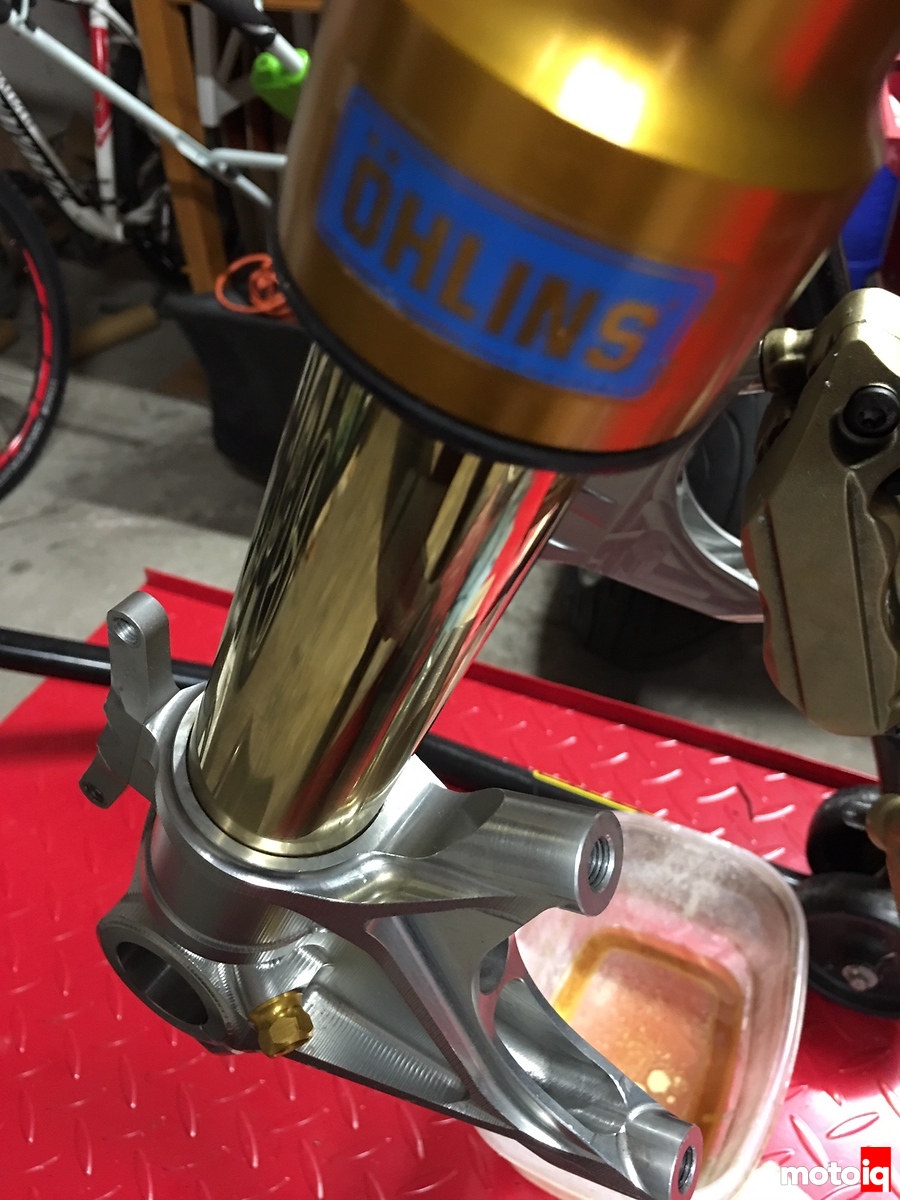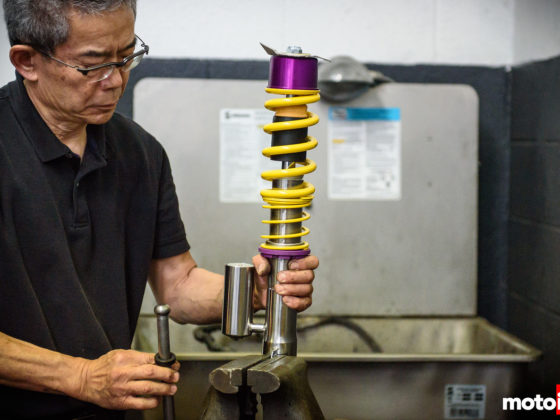
Using the 848 spec Ohlins forks on a 998 requires a brake disc modification. The FGRT forks place the calipers farther apart by 5mm than the OEM 748-998 fork units do. The 748R/996R and 998R models shared this increased spacing that eventually became standard on 749/999 and 848/1198. The plan is to keep the stock 998 wheels which means discs with 5 bolt holes are required. The Ducati 749 and later models all used 6 bolt discs, meaning the only direct fit for 5bolt with increased spacing is from the 748R-998R. There are options still out there thankfully, but they’re not cheap. The discs that came on this 998 are still in great shape, so in the interest of being cheap, I bought these nice CNC 5mm spacers from Motowheels.
Secondly, the bolts that hold the brake discs need to be 5mm longer to ensure proper thread engagement. I bought some from McMaster-Carr. They’re stainless instead of zinc-coated, so they don’t look quite right, but won’t corrode either way. McMasterCarr sells multiple types of stainless fasteners. I used the ‘High Strength Stainless Steel Socket Head Screws’ specifically because they have a higher tensile strength of 110 ksi vs the regular stainless’s 70 ksi. I think either would work fine in this application though; titanium bolts are readily available as replacements and have less tensile strength than either type of steel.






6 comments
Be careful substituting in stainless steel bolts in the place of carbon steel bolts. Austenitic stainless steels like 18-8/304 are typically very low strength with the amount of work hardening that goes into making a bolt. Additionally, the different methods of making a bolt, and how much the threads are rolled drastically affect the final tensile strength of the bolt, to the point that they typically aren’t even rated for tensile strength or hardness.
Most low carbon bolts are going to have a tensile strength in the 115-145 ksi range, while most commercial CRES bolts will be in the ~70-85 ksi range.
Great comment Def. McMasterCarr sells multiple types of stainless fasteners. For clarification, I used the ‘High Strength Stainless Steel Socket Head Screws’ specifically because they have a higher tensile strength of 110 ksi vs the regular stainless’s 70 ksi.
I think either would work though; titanium bolts are readily available as replacements and have less tensile strength than either type of steel.
A good point to make Rob, it might be good to note this in the article because I was thinking the same thing as Def.
Updated. Thanks again for the comment Def!
Had the exact same thought regarding 300 series stainless fasteners. Nice find with the high strength options. That being said, there are many titanium fasteners that are 110+ ksi. The ones on mcmaster that quote 50 ksi are probably grade 2 titanium for corrosion resistance. Grade 5 is much stronger and that’s what is more typical for performance oriented fasteners (pro-bolt, allied titanium, etc.)
You’re right. Pro bolt lists grade 5 for their titanium fasteners with a ‘greater than 120ksi’ tensile strength. They also list shear modulus, ductility, Rockwell hardens etc. Really quite impressive that they have all of this information for the customer.
They also DLC coat the fasteners for corrosion resistance. Shame their too expensive typically for a cheap ass like myself.